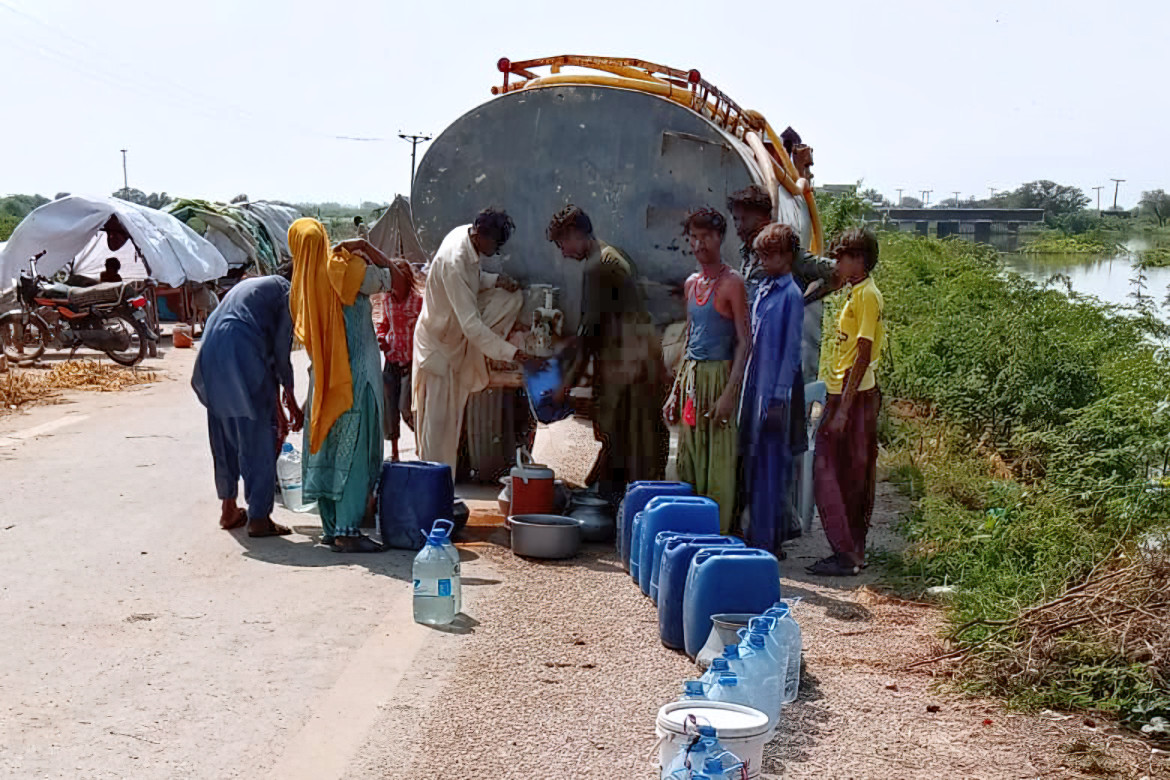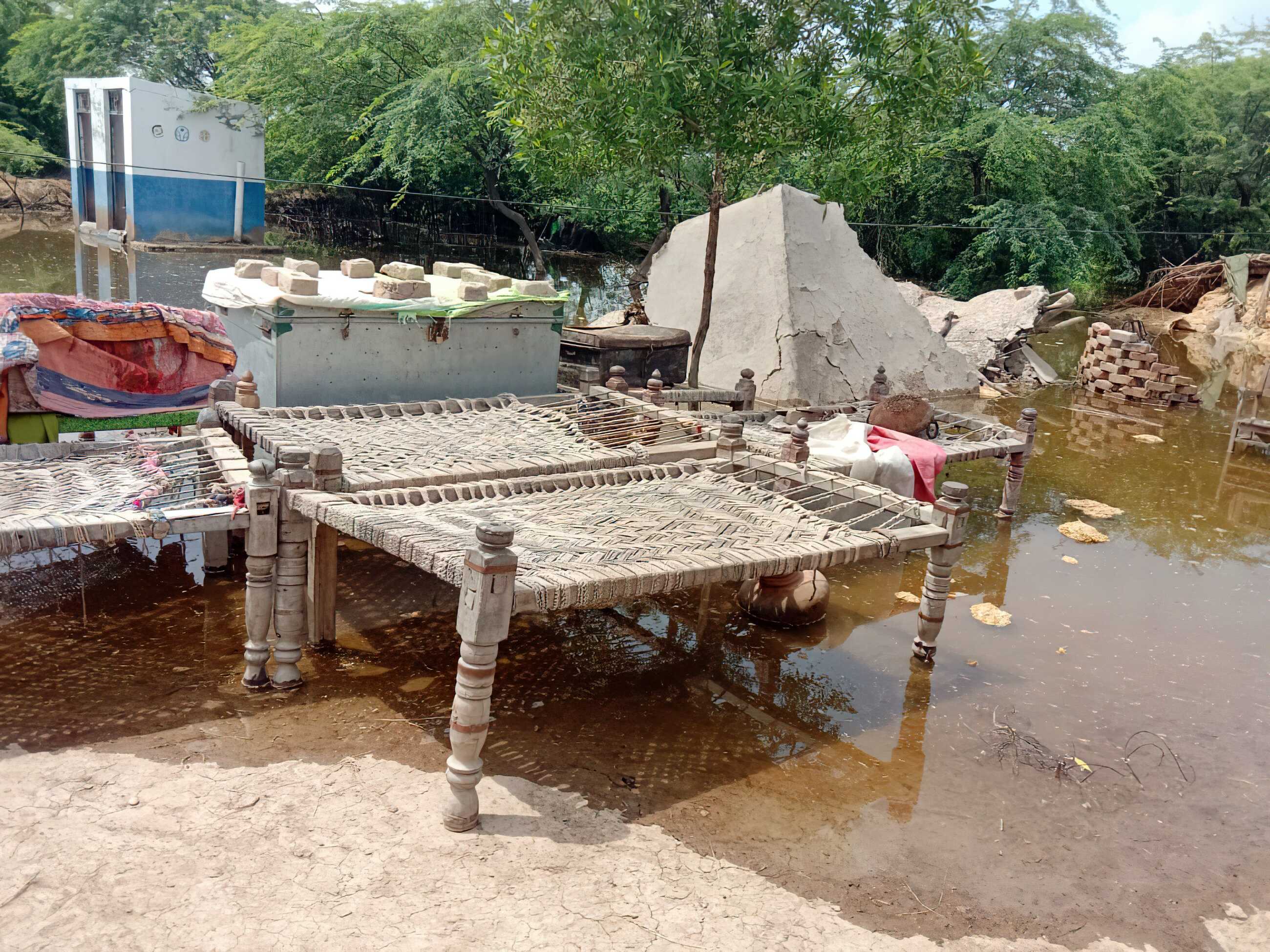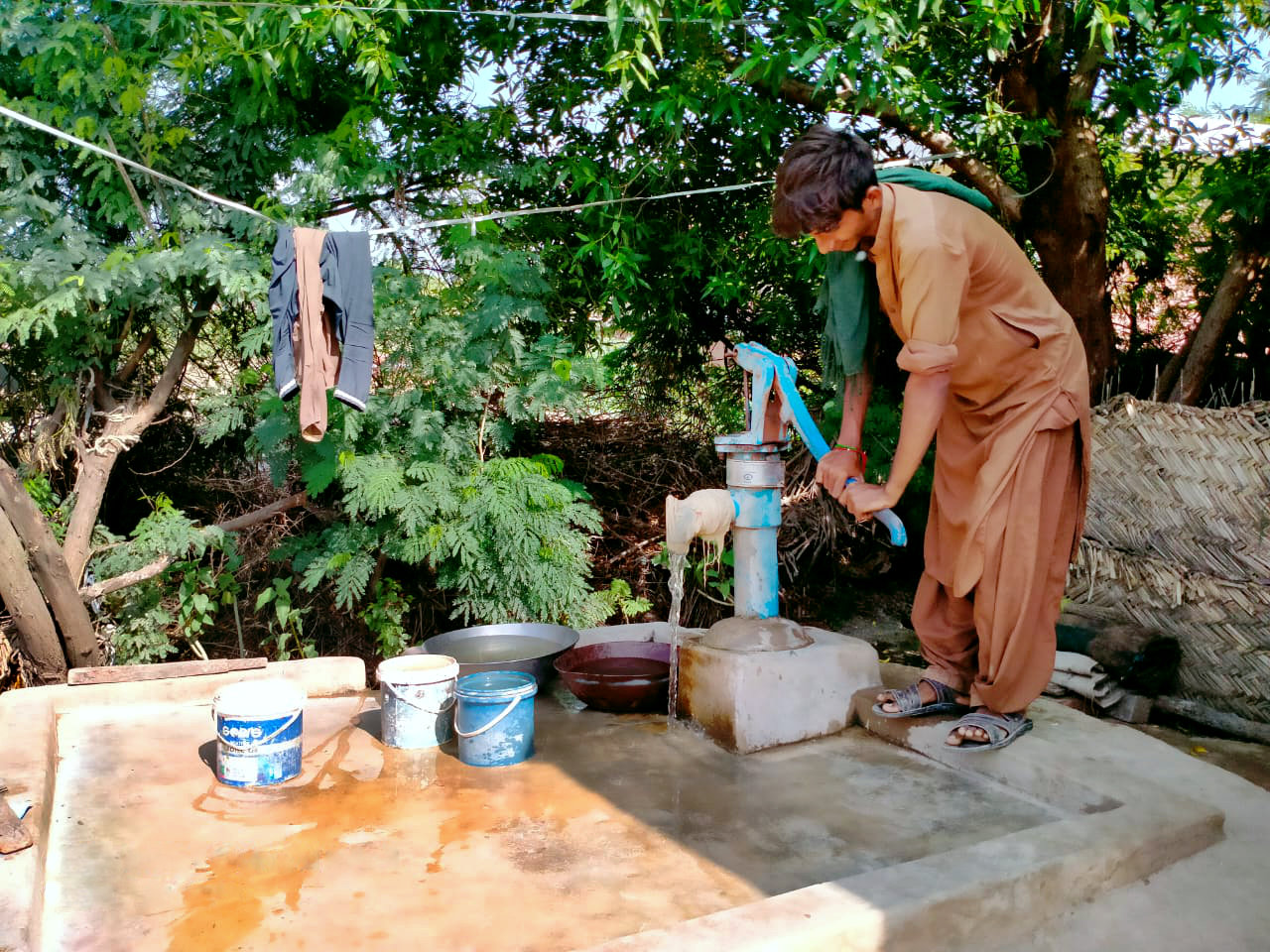The people of Pakistan are used to heavy rainfall during the monsoon season. This year, however, the rainfall is exceptionally high. Heavy rain has been falling in many regions of Pakistan for weeks now, flooding ever larger areas. According to the United Nations, 80 districts have already been declared disaster areas and about 33 million people are affected. Through the local partner organisation Participatory Village Development Program (PVDP), arche noVa is now organising urgently needed relief supplies.
"The situation is dramatic. Countless roads and bridges have been destroyed by the floods, many villages are inundated and cut off from the outside world," says Andrea Bindel, advisor for global emergency aid and WASH at arche noVa. "The most important thing now is to get food and safe water to the affected people."
Contaminated water endangers the local communities
In particular, the supply of water poses a problem. Because even though there is currently an abundance of water, the water available locally cannot be drunk. The villages and hand pumps in our project region in Sindh are flooded, the water is extremely muddy and heavily contaminated by industrial wastewater and feces, and any existing wells are unsafe. Up to two meters high, the water is breeding with countless insects, and vermin have joined the people in escaping the water to the few dry places, such as the raised roads and embankments along the irrigation canals. This favors the spread of diseases such as diarrhea, malaria, typhoid and polio. Together with PVDP, arche noVa therefore ensures the supply of clean water and hygiene measures in the particularly affected district of Mirpurkhas. The local village communities are also supplied with food and urgently needed "non-food items" such as mosquito nets, plastic tarps, insect spray, soap and jerry cans as part of the emergency relief measures. TSuch supplies are intended to ensure that the affected people are also protected against disease in the period after the floods.
Measures taken so far show effect
After the flood disaster in 2011, arche noVa already implemented projects in Mirpurkhas and also cooperated with the local partner PVDP. As part of rehabilitation measures, so called "Save-Points" were built. These are strategically located places in the villages, which were filled up to 30cm above the highest flood level ever measured (2011) and are sufficiently large so that the population can find shelter on them during times of flood. They were connected to the embanked access roads to the villages so that a supply of relief goods is possible even in the event of flooding. Additional "Animal Save Points" for livestock were mounded nearby. On top of each "Save Point" arche noVa constructed a structure, which was equipped with a solar system, mosquito nets, emergency beds, etc. and can be used as an ambulance station, storage for food or emergency shelter in times of need. Each "Save-Point" has "flood-proof" latrines and hand pumps for water collection.
In "normal" times, a special area of the building stores the equipment for the Disaster Management Committees and Search and Rescue Teams established, trained and equipped by arche noVa in the villages. It is then used as a community centre or school. "Our contacts on the ground report to us that most of the Safe Points are dry and in use so far and the technology is also functional and in use. Some of the Save Point buildings are used by the regional health office as a drop-in centre for sick people and for dispensing medication," says Andrea Bindel. "This shows us that the concepts we developed together with the villages at the time and our help make sense."















